Indiana is famous for its beautiful scenery and rich history. It also has a wide range of rocks, minerals, and gems that always seem to capture the imagination.
This plain state in the middle of the United States might not be the first place that comes to mind when you think of geological wonders, but it’s full of them just ready to be found!
From the limestone layers that make up the state’s buildings to the sparkling crystals that are buried deep in the ground, Indiana has a wide range of geological features that is on par with the best places to go rockhounding.
In this article, you’ll learn about the fascinating rocks, minerals, and gems that have been quietly shaping the state’s scenery for millions of years. Here’s what you need to know about the beautiful and mysterious state that lies beneath the surface.
A List of The Common Rocks, Stones, and Minerals Found in Indiana
Let’s start by talking about some of the most popular rocks and minerals in the state. Check out the following articles for the full guides, where we go into great detail:
The Indiana State Rock, Mineral, and Gem
Here are the official state natural gems, which will help you understand what we’re talking about:
| Indiana State Rock | Limestone |
| Indiana State Mineral | None |
| Indiana State Gem | None |
Find out more about the state’s geology policy by visiting the Indiana Department of Natural Resources (DNR) site.
Always Confirm Access and Collection Rules!
Before heading out to any of the locations on our list you need to confirm access requirements and collection rules for both public and private locations directly with the location. We haven’t personally verified every location and the access requirements and collection rules often change without notice.
Many of the locations we mention will not allow collecting but are still great places for those who love to find beautiful rocks and minerals in the wild without keeping them. We also can’t guarantee you will find anything in these locations since they are constantly changing.
Always get updated information directly from the source ahead of time to ensure responsible rockhounding. If you want even more current options it’s always a good idea to contact local rock and mineral clubs and groups
Calcite

In Indiana, you can find calcite, which is an interesting mineral. It looks like bright art made by nature! Calcium carbonate is what calcite is made of, and it comes in many colors, from clear to red, blue, and green shades. The beautiful crystal forms of calcite are what make it stand out.
When water that has calcium carbonate dissolved changes, calcite forms. Sometimes this happens when water evaporates or when pressure and temps change.
It can be found in Indiana in limestone caves, where it decorates the walls and ceilings. The beautiful crystals of calcite can be seen in well-known caves like Marengo Cave and Squire Boone Caverns, which draw both explorers and scientists.
Calcite comes in many forms in Indiana. “Cave Calcite” is one of the most well-known. These calcite rocks grow well in limestone caves and show off their bright colors and unique shapes.
In addition to being pretty, calcite is also helpful. In fields like wastewater treatment, it neutralizes acids, and optical tools use it to make light more polarized. It’s an important part of many useful things, which makes calcite more valuable.
Where you can find Calcite in Indiana
There are many calcite sources in the state, some of which are:
- Huntington Quarry
- Mud Pine Creek
- Salt Creek
- Yellowwood State Forest
Dolomite

Dolomite is an interesting material that can be found in Indiana. It has its own story to tell. It’s like a natural time capsule that tells us about the past of the Earth! It’s made up of calcium magnesium carbonate.
It usually has shades of pink, white, or gray, but it can also be clear. It’s interesting because of how it was formed and its role in Indiana’s geology.
Calcite and other rocks that contain calcium carbonate mix with groundwater high in magnesium over time to make dolomite. There are different kinds of dolomite in Indiana, such as the popular “Dolostone.”
These rocks are found all over the place. You can find them in mines, road cuts, and even as building materials.
Dolomite is valuable because of what it can be used for. It makes concrete and asphalt stronger and is used in building. It’s also an important part of chemicals used in farming.
It can also neutralize acidic water, which makes it better for the earth. Not only does it add to the variety of rocks in Indiana, it’s also very important in building and farming.
Where you can find Dolomite in Indiana
The state has a lot of dolomite minerals, such as in these places:
- Debolt Quarry
Sphalerite

Sphalerite is an exciting material that can be found in Indiana. It’s like a gem that’s been buried deep in the ground. Some types of sphalerite are brown, yellow, or black, and their main ingredient is zinc sulfide.
Sphalerite is made when hot fluids full of minerals rise from deep inside the Earth’s crust and hit zinc-containing rocks. There are sphalerite crystals that form when these fluids cool down.
There are different kinds of sphalerite in Indiana, mostly in places where zinc ore is found. You can find these minerals in mines, and they are often found with other important minerals, such as galena, which has lead in it.
Sphalerite is very valuable because it contains a lot of zinc, which is needed in many industrial processes. Iron, batteries, sunscreen, and even sunscreen are made with zinc. It’s also important for plant growth, which is why it’s used in fertilizers for farming.
Where you can find Sphalerite in Indiana
In Indiana, you can find a lot of sphalerite in places like the ones below:
- Big Pine Creek
- Erie Stone Co. Quarry
- Mud Pine Creek
- Huntington Quarry
Limestone

Throughout Indiana, you can discover the amazing rock limestone, which has an interesting story. The history of ancient seas and animals is kept alive like a picture from the past.
The main mineral in limestone is calcium carbonate, which usually comes in gray, tan, or white colors. What’s interesting about Indiana’s geology is learning how limestone forms and why it’s important.
Organisms like coral, shells, and algae fall to the ocean floor and turn into limestone. After millions of years, their bones and other remains build up and get compressed, changing into limestone rock.
Numerous kinds of limestone can be found in Indiana, including the well-known “Indiana Limestone.” The long-lasting nature of this fine stone has led to its use in buildings and structures worldwide.
There are several reasons why limestone is very valuable. This is a strong and flexible building material that has been used to make houses, bridges, and even the famous Empire State Building.
It’s often used for statues and carvings because of its natural beauty. It’s also used to improve the soil quality in farming and many other businesses, such as making steel, treating water, and even making toothpaste.
Where you can find Limestone in Indiana
Indiana has a lot of limestone, especially in these places:
- France Stone Co. Quarry
- Maumee River
- Mud Pine Creek
- Yellowwood State Forest
The Gemstones Found In Indiana
Let us talk more about the gems that you can find in Indiana. We’ve also put together a list of the very detailed pieces we’ve written if you want a full guide:
Agate
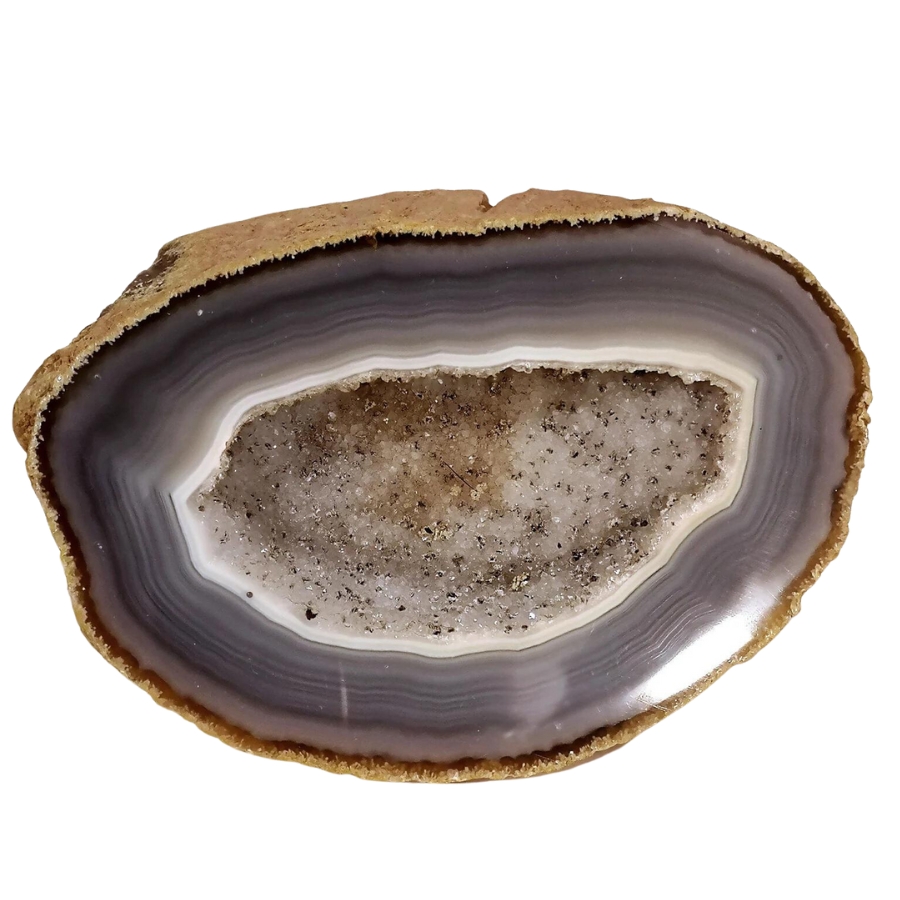
It might surprise you to learn that you can find agate in Indiana. This beautiful stone has a story to tell. It looks like a bright painting that nature made.
Agate is a type of quartz that is famous for its bright bands of color that can be anything from deep blues and reds to earthy browns and greens. It’s interesting to learn about how agate forms, the kinds that can be found in Indiana, and why it’s so valuable.
Mineral-rich water gets into cracks in rocks like volcanic rocks or limestone and forms agate. Over a long time, this water leaves behind thin layers of minerals, which are often arranged in bands and give agate its unique stripes.
Agate is highly prized for its stunning beauty and many uses. Craftsmen have used it for hundreds of years to make jewelry, decorations, and even very complicated carvings.
Where you can find Agate in Indiana
We’ve put together a full guide on where to find agate in Indiana. You can also try to find them in these places after you’ve been to those:
- Maumee River
- Salt Creek
- Yellowwood State Forest
Citrine

The bright gemstone citrine can be found in Indiana, which may surprise you. It feels like a nice piece of sunshine is stuck inside a pretty stone. Discovering how citrine forms, the kinds found in Indiana, and why people love them can be very interesting.
The mineral citrine is made when purple amethyst, another type of quartz, is heated naturally deep in the Earth. This heat changes the amethyst’s color into the beautiful golden tones of citrine.
Within Indiana, you can find citrine as tiny gems mixed in with other rocks. Although it’s not as common as some other gems, its presence in the state adds to its natural variety.
People value citrine a lot because it’s so beautiful and has good energy. It’s often used in jewelry because people believe its warm color means success and plenty.
This gemstone is loved and sought after by jewelry and gem lovers because it looks sunny and makes people feel good. It’s even more special when it’s found in Indiana.
Where you can find Citrine in Indiana
There are citrine rocks all over Indiana, but the best places to find them are:
Garnet
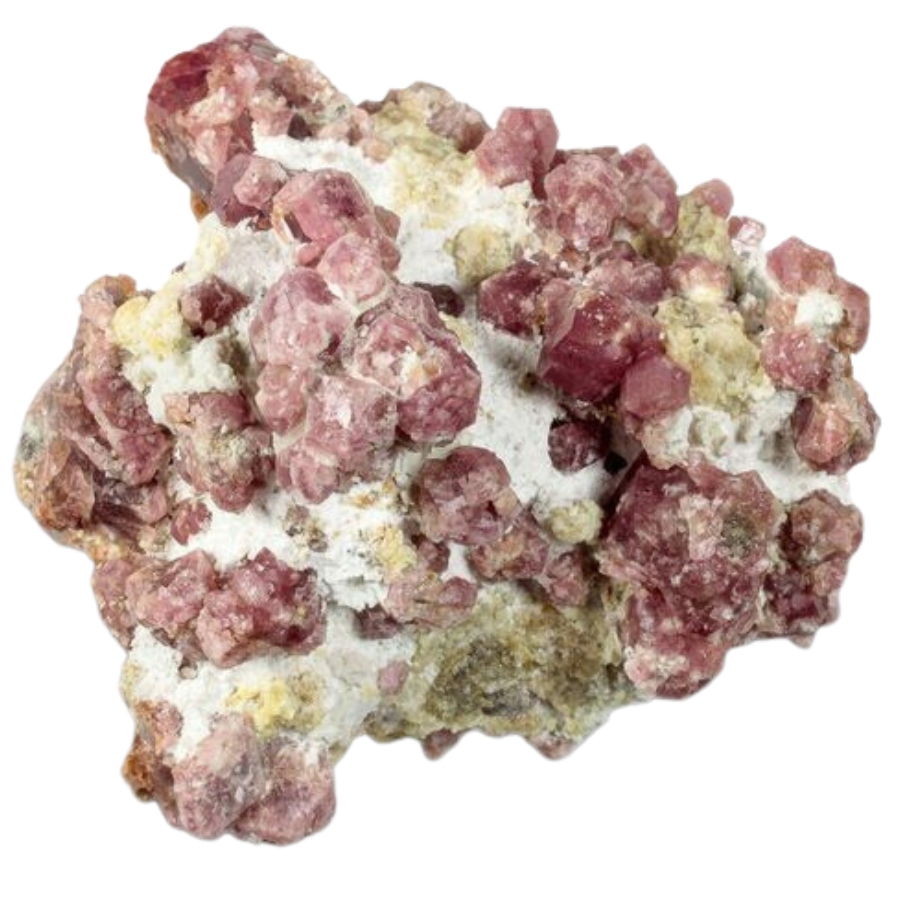
You might be surprised to learn that garnet can be found in Indiana. It is a beautiful stone with a long past. It looks like a small, sparkling prize buried deep in the ground.
There are many colors of garnet, but the most well-known are the deep red ones. Minerals rearrange and make them when the Earth’s high pressure and temperature cause them to do so.
The most popular garnet that can be found in Indiana is almandine garnet. These gems are often found in rocks that have changed over time. They have beautiful reddish-brown to deep red colors.
It’s precious because it’s very beautiful and lasts a long time. When put in jewelry, it gives it a touch of class and beauty. Because it’s so hard, garnet is used in abrasive materials like sandpaper and waterjet cutting.
Garnet is valuable and loved for both its beauty and its usefulness. It can be found here in Indiana and adds a bit of natural beauty and versatility to our lives.
Where you can find Garnet in Indiana
Garnets can be found all over Indiana, but mostly in these spots:
- Highland Creek
- Gold Creek
Jasper

Jasper is a type of chalcedony liked for its natural colors and one-of-a-kind patterns.
Silica-rich water seeps into rock holes and deposits minerals slowly over time, making jasper. It’s these minerals that give jasper its lovely shapes and colors.
In Indiana, you can find different kinds of jasper, such as orbicular jasper, with designs that look like colorful orbs. You can find this gemstone in riverbeds, mines, and sometimes even small rocks on the shores of Lake Michigan.
Jasper is highly valued because of how beautiful it is and how different its patterns are. A lot of jewelry and home decor items use it.
The earthy colors and detailed patterns give them a touch of style and personality. It brings a piece of nature’s art into our lives.
Where you can find Jasper in Indiana
Indiana has a lot of jaspers, especially in the following places:
- Maumee River
Quartz

Quartz is an interesting gemstone that comes in many forms. It has a special place in Indiana’s geological history. It comes in many different colors and shapes, like a crystal puzzle found in nature.
It’s one of the most common rocks on Earth and comprises silicon and oxygen atoms.
Quartz crystals are made when silicon dioxide molecules stick together in a repeating pattern. There are flaws in the crystal structure that cause it to change colors.
There are different kinds of quartz in Indiana. You can find amethyst, clear quartz, and smoky quartz. Some places where you can find these gems are in caves, along rivers, and even as tiny crystals in rocks.
Jewelry like rings, earrings, and bracelets often have quartz in it. It’s also used in electronics like computers and watches because they can make accurate electrical messages.
Quartz is a valued material in Indiana that adds beauty and usefulness to our lives.
Where you can find Quartz in Indiana
In Indiana, you can find quartz in many places, but mostly in these spots:
- France Stone Co. Quarry
- Highland Creek
Siderite

Siderite is mostly made up of iron carbonate crystals that can be brown, yellow, or green. Minerals that are high in iron mix with carbon dioxide and water to make siderite.
These elements combine over time, making siderite crystals. There are different kinds of siderite in Indiana. One of the most famous is “Spathic Iron,” which has a unique rhombohedral crystal shape.
You can find these minerals in caves and mines. Sometimes, they are found in the form of beautiful groups of crystals.
Siderite is valuable because it can be used in many fields. It’s an important place to get iron, which is used to make steel and other metals. Besides being a color in paints, siderite can also be used as a fertilizer in farming.
It’s a useful mineral with historical and current importance because it’s used in farming and manufacturing. It’s an important part of Indiana’s geological diversity and industrial history.
Where you can find Siderite in Indiana
Indiana is abundant in Siderite, mostly in these places:
- Big Pine Creek
- Coal Hollow
- Dunn Limestone Quarry
The Crystals Found In Indiana
Indiana has a lot of beautiful gems that are very valuable to collectors and crystal lovers. We have written a lot about these rocks below.
Also, check out our piece on where to find crystals in Indiana:
Apatite

Apatite is mostly made up of phosphate and calcium and has a range of colors, including green, blue, yellow, and purple.
It’s made when rocks high in phosphate react with different geological processes. There are different kinds of apatite in Indiana. One of them is fluorapatite, which has bright colors and usually looks like small crystals or holes in other rocks.
You can find these gems in several geological places, including limestone mines and sedimentary rocks high in phosphate.
Apatite is very valuable because it can be used in many ways. It’s an important part of making fertilizers, which help crops grow better and increase agricultural output.
It’s also used to make phosphoric acid, an important ingredient in many products, such as food, drinks, and cleaning.
Apatite is also a popular choice for jewelry and gem lovers because of its bright colors. It’s a valued mineral in Indiana, whether for its use in farming or business, or just because it looks nice. It adds to our daily lives and the geological diversity of the state.
Where you can find Apatite in Indiana
It’s easy to find apatite in Indiana, especially in these places:
- Debolt Quarry
- France Stone Quarry
Aragonite

Calcium carbonate is the main ingredient in aragonite, made when calcium carbonate crystals settle out of water over time. You can find different kinds of aragonite in Indiana.
One is called “Needle Aragonite,” and its long, thin crystals look like needles or spikes. You can often find these forms in caves, springs, and other places with a lot of calcium.
Many mineral fans like aragonite, and it’s also sometimes used in jewelry making or lapidary work. Scientists are also interested in and study aragonite because it can be used to make very delicate and complicated structures.
Its presence in Indiana increases the variety of rocks in the state and helps with scientific study and enjoying the beauty of nature.
Where you can find Aragonite in Indiana
In Indiana, you can find aragonite in these places:
- Marengo Cave
Barite
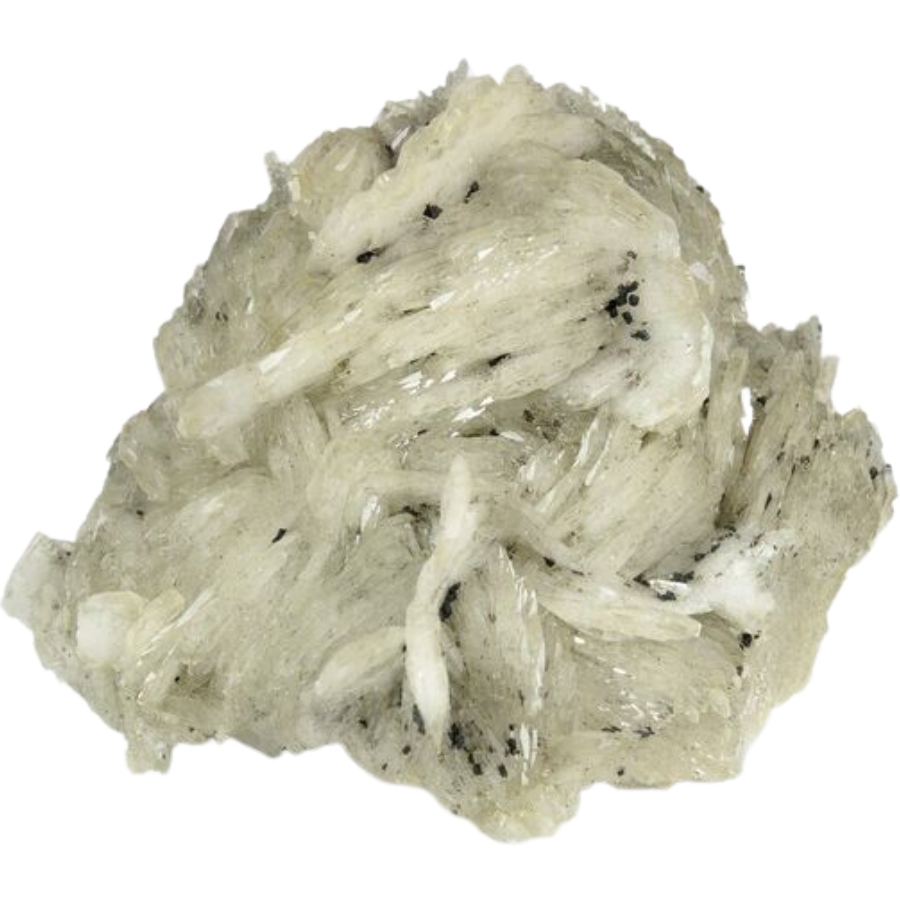
Barite comes in many colors, from white and gray to blue, yellow, and brown shades. It’s like a natural treasure chest.
Barite is made when barium-rich fluids mix with sulfate ions in the Earth’s crust. Over time, these chemical processes cause crystals of barite to form. There are different kinds of barite in Indiana.
One is called “Desert Rose,” growing in unique rosette-shaped groups. You can find barite in volcanic rocks, caves, and mines. It’s often found with other minerals, such as fluorite.
It’s precious for the many ways it can be used. In the oil and gas business, it’s often added to drilling muds to make them heavier. This helps control well pressure and keep boreholes stable while digging.
In the medical area, barite is used for imaging to help with diagnosis. It’s also used to make paints, plastics, and ceramics. Because it’s helpful in medicine and business, barite is a critical mineral that adds to the variety of Indiana’s rocks and many parts of modern life.
Where you can find Barite in Indiana
You can find one-of-a-kind pieces of barite in the following places:
- Big Pine Creek
- Dunn Limestone Quarry
Celestite
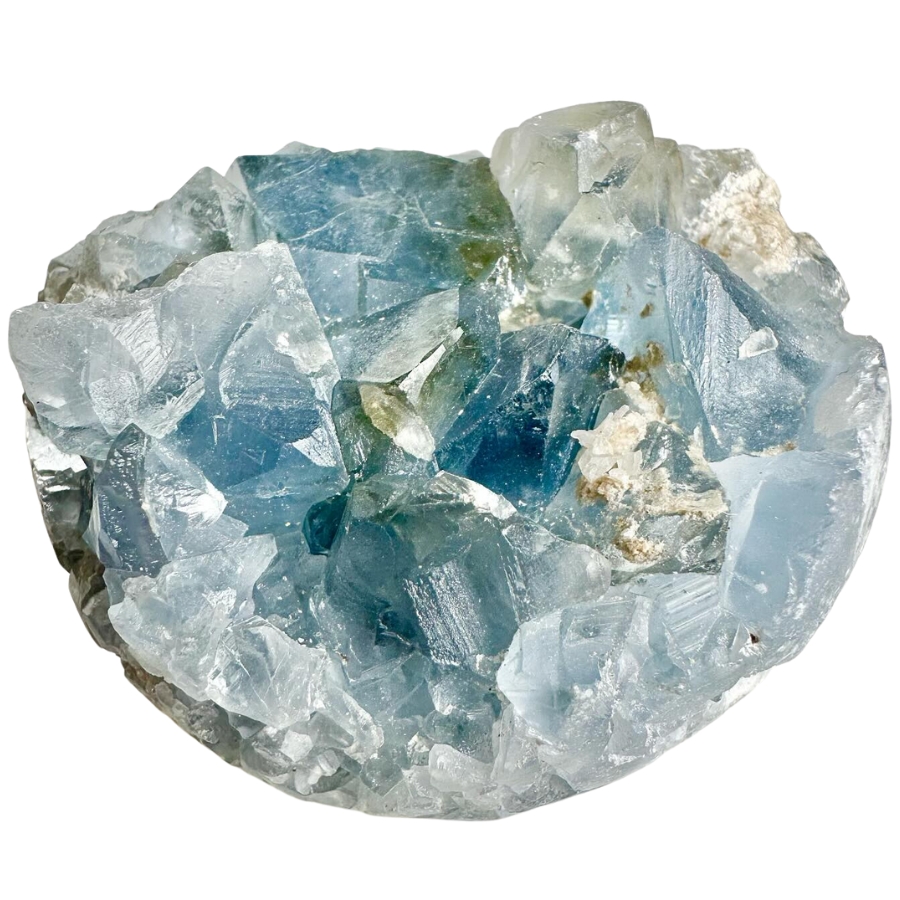
Indiana is home to the beautiful gem celestite, known for its tiny blue crystals that look like the sky. It feels like a little piece of heaven is hidden under the surface of the Earth.
Celestite is made when liquids high in strontium react with sulfate ions in holes in the ground. These chemical processes cause beautiful sky-blue celestite crystals to grow over time.
You can find different kinds of celestite, usually in geodes, round rock holes filled with crystals. These geodes are found in sedimentary rocks, and fans love them because of how beautiful they look.
It’s used in many industrial processes, such as to make fireworks and as a source of strontium in glass and pottery. Celestite is a valuable mineral in Indiana because it can be used as a calming gemstone and an industry resource. It helps with both personal health and industrial processes.
Where you can find Celestite in Indiana
Celestite can be found in the following places:
- Dunn Limestone Quarry
Fluorite
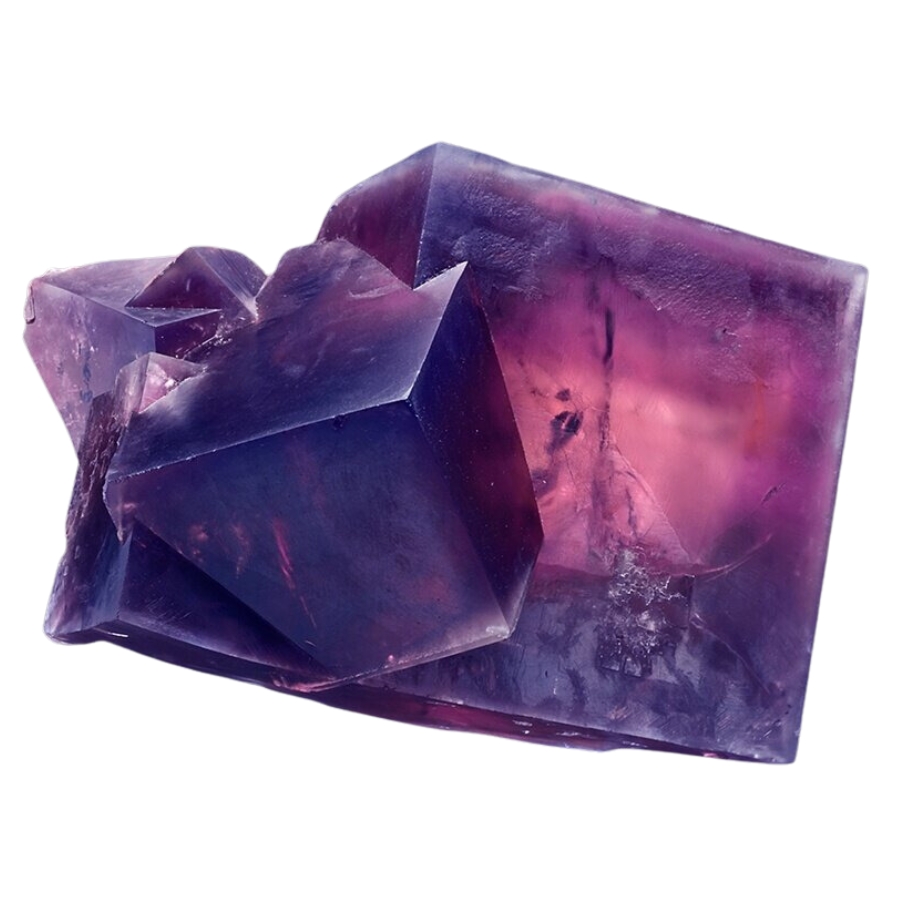
Fluorite is a beautiful mineral that can be found in Indiana. It’s known for having bright colors and unusual crystal shapes. It’s mostly made of calcium fluoride and comes in many colors, such as purple, green, blue, yellow, and more.
It’s made when hot, mineral-rich fluids flow through cracks in the rock and leave crystals of fluorite. The colors of fluorite come from the minor elements present when it was formed. You can find these crystals in caves, quarries, and mines.
The value of fluorite is determined by its beauty and use. Because of its bright colors and complex crystal shapes, it’s a popular choice among fans, stone workers, and jewelry designers.
In addition to being beautiful, fluorite is used in many different fields, such as to make steel, metal, and some chemicals. Because it can bend and refract light in a special way, it’s also used in optical devices like lenses and prisms.
Where you can find Fluorite in Indiana
Fluorite is easy to find in Indiana especially in these places:
- Cave Stone Co. Quarry
- Meshberger Stone Co Quarry
Hematite

Hematite is a fascinating mineral that can be found in Indiana. It has a metallic sheen and a striking look. It’s like finding a shiny piece of silver tucked away in the rocks of the Earth. It’s mostly made up of iron oxide, and its color can be anywhere from gray to black.
It’s made when minerals that are high in iron respond chemically with oxygen and water. Over time, this process makes these crystals possible.
In Indiana, you can find different kinds of hematite, such as botryoidal hematite, shaped like round grape bunches, and specular hematite, which has a smooth, reflective surface.
You can find these crystals in sedimentary rocks, caves, and sometimes in stones that have been worn down or polished.
Because it looks like metal, hematite is very valuable and is often used to make jewelry and decorative art. The way it shines adds a touch of class and beauty to many designs.
Additionally, hematite is a significant source of iron, which is needed to make steel and other metals.
Because it can be used in many industries and looks nice, hematite is a valued material in Indiana that adds to our daily lives and the geological diversity of the state.
Where you can find Hematite in Indiana
You can look in the following places to find pieces of hematite:
- Highland Creek
Marcasite
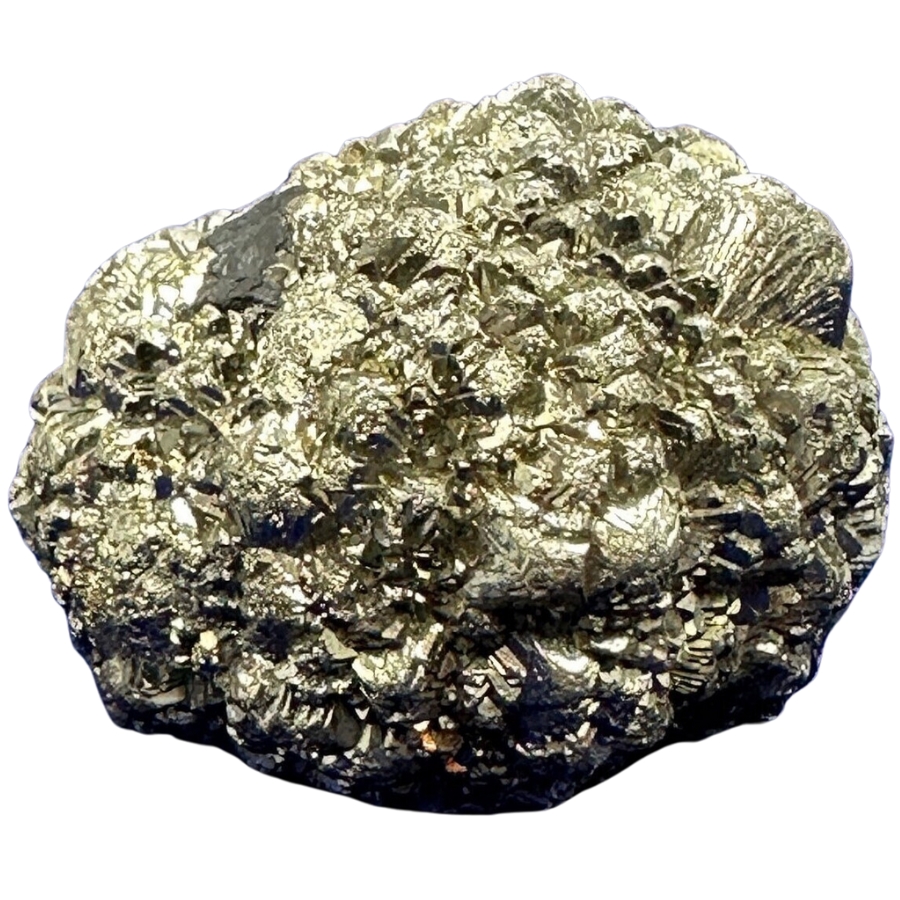
Marcasite is a lovely gem known for its metallic sheen and unique crystal structures. It looks like a silver prize that has been hidden. Iron sulfide makes up most of it, which usually forms in beautiful brassy-yellow or silver-gray crystals.
When sulfur and other elements in the ground combine with iron sulfide minerals, marcasite is made. This chemical process makes marcasite crystals grow over time.
There are different kinds of marcasite in Indiana, which is often found in volcanic rocks and caves. People love these rocks because they shine like metal and have unique crystal shapes.
It’s very valuable because of the way it looks and is used to make jewelry and other decorations. It’s often set as a gemstone in rings, earrings, and brooches.
The brassy shine gives them a touch of class and old-fashioned charm. It has been used in jewelry for hundreds of years, and its past goes back to ancient times.
Where you can find Marcasite in Indiana
Pieces of marcasite can be found in the following places:
- Cave Stone Co. Quarry
- Erie Stone Co. Quarry
- Norgan Company Coal Mine
Pyrite
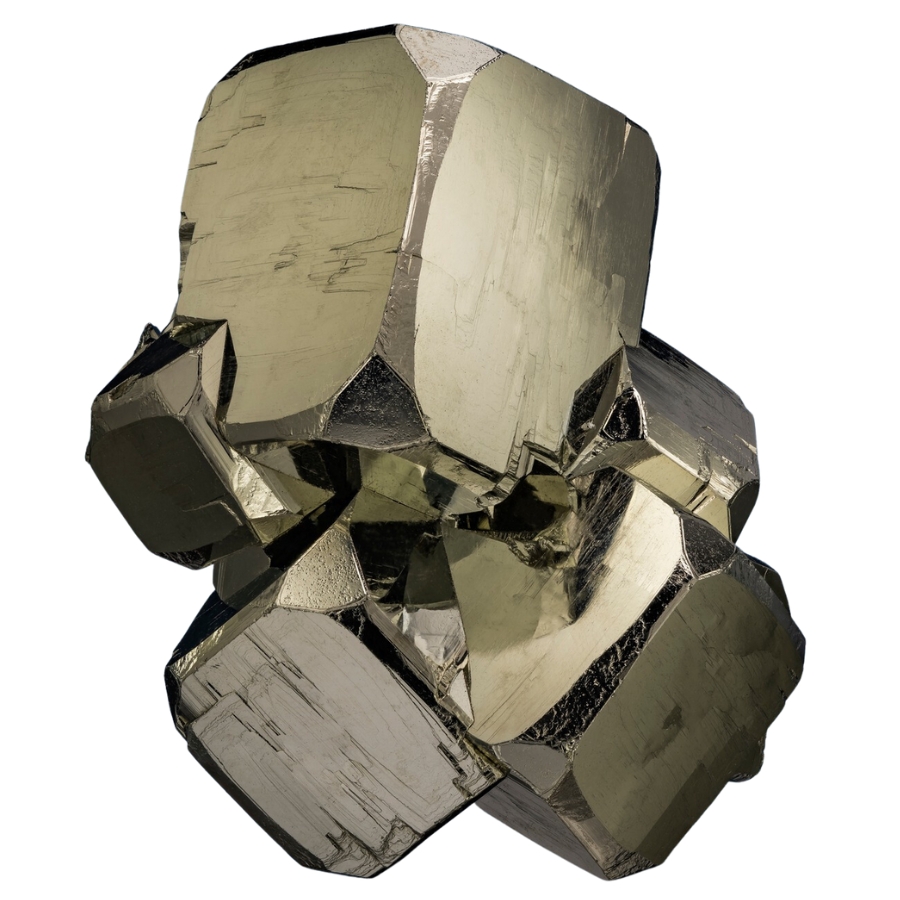
People often call the mineral pyrite “Fool’s Gold” because it looks like real gold in the way it sparkles and is yellow. In the Earth’s deepest layers, where it’s hot and pressured, iron and sulfur come together to form it.
Pyrite comes in a range of sizes and forms in Indiana. On some days it looks like tiny diamonds stuck in rocks, and on other days it may be in big chunks.
The way these pieces naturally shape into cubes or towers can be cool. It’s like nature has its own building blocks!
Pyrite is valuable for many reasons. It’s not just because it looks nice and could be gold. Scientists like it because it tells them about places on Earth very long ago and how things were there.
It isn’t as valuable as gold, but it has a unique sparkle that makes it fun to learn about and own.
Where you can find Pyrite in Indiana
You can find pyrite in the following places:
- Huntington Quarry
- Quimby Quarry
- Stephen Quarry
The Most Valuable Rocks and Minerals in Indiana
Let’s talk about the well-known rocks. When you find these rocks and minerals, they can help you make more money:
Diamond
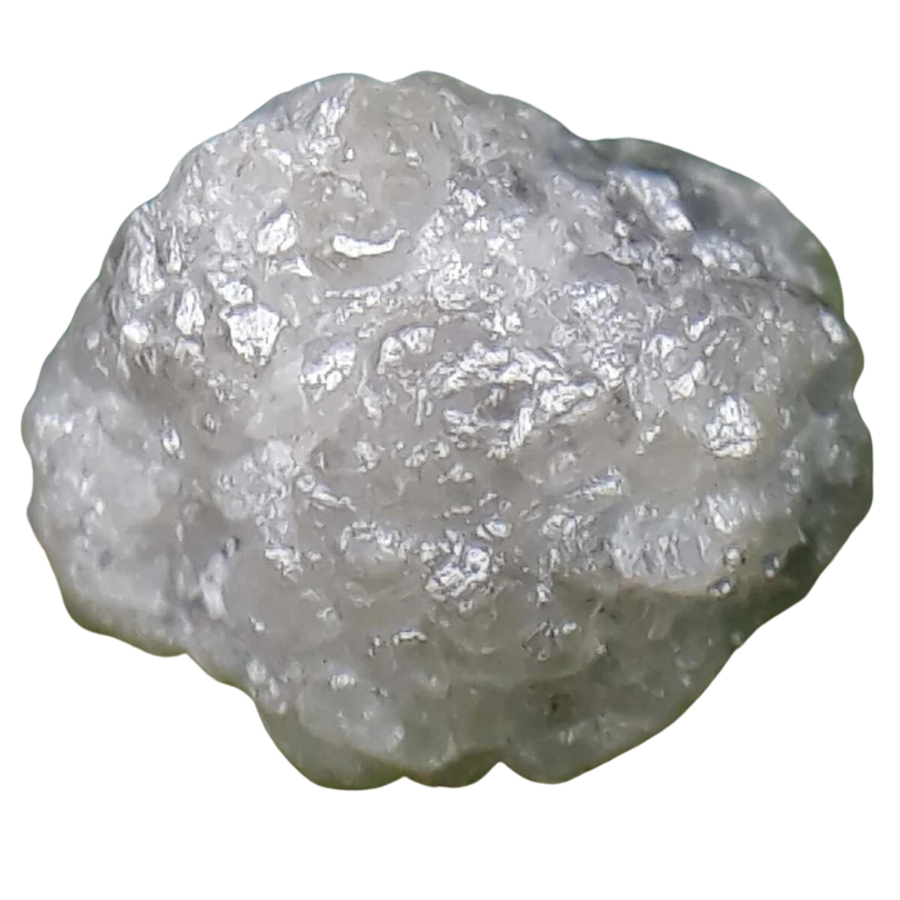
Beyond being beautiful stones, diamonds are made of carbon, which is one of the most common elements in the universe. There is something special about diamonds, though.
Carbon atoms are squished together so tightly by high heat and pressure deep below the Earth’s surface that they form a seriously strong crystal.
For billions of years, diamonds have been formed underground. When they finally reach the surface through volcanic blasts, they’re ready to be found.
They can be found almost everywhere in the world, even in Indiana. There aren’t any diamond mines in Indiana, but some people find small specimens in streams or ice deposits.
These aren’t the big, shiny gems you see in jewelry shops. They’re rough and don’t come around very often. It’s always exciting to think there might be a diamond in the ground, even if Indiana isn’t known for its gems.
Diamonds have always been loved, not just because they’re the hardest natural thing on Earth. Everyone will notice how shiny and sparkly they are, which makes them great for jewelry.
Of course, diamonds are essential for more than just their good looks. They are tough enough to cut through almost anything. That’s why they’re used in drilling and cutting tools.
People all over the world value diamonds, whether they are for their beauty or their usefulness. Finding one is like finding a secret part of Earth’s history.
Where you can find Diamond in Indiana
You can find unique diamond specimens in the following places:
- Highland Creek
- Lick Creek
Sapphire

Sapphires are beautiful gems that come in all colors except red. The most well-known color is deep blue. Copper and air have been squished together under the ground to make corundum, the mineral that makes them.
Very few things can make this happen. For millions of years, rocks must be heated and pressed together until they finally change into these sparkling stones.
As in other parts of the world, Indiana doesn’t have big fields full of sapphires. But that doesn’t mean they aren’t there. In streams and rivers, small sapphires can sometimes appear in the sand.
This is because the water brings them down from far away, where they are formed. There is a chance these sapphires aren’t as big or perfect as those in jewelry stores, but it would be like finding a small prize in Indiana.
There are several reasons why sapphires are valuable. Not only are they beautiful, but they also don’t get scratched or broken easily, so they’re great for everyday jewelry.
Plus, they’re very useful in technology. Because they’re so hard and can handle a lot of heat, they’re used in electronics, watches, and scientific equipment. These stones aren’t just pretty; they’re also very helpful!
Where you can find Sapphire in Indiana
Among the places you can find sapphire in the state, is at Gold Creek.
Topaz

Topaz is a cool stone in many colors, such as blue, green, yellow, and even pink. It’s most often a bright golden brown, though. The material that makes it up forms very deep in the Earth, where it takes a long time to grow.
It’s formed when a certain type of liquid in the crust of the Earth cools down. To become the shiny gem we know, it takes a long time and just the right mix of rocks.
Topaz isn’t something you’d usually find on a hike in Indiana. Big topaz gems don’t form in the ground like they do in some other states where there are mines full of them.
Stream gravel or sand can sometimes have small pieces of topaz in it. This is especially true after being washed down from somewhere with it.
There are many reasons why people value topaz. You can wear jewelry every day without thinking about breaking it because it’s very hard and doesn’t scratch easily. I
It can be used to help make pictures very clear in cameras and telescopes because it’s so clear. Topaz isn’t just pretty to look at; it has a purpose, whether it’s in a necklace or a super-cool gadget.
Where you can find Topaz in Indiana
You can find topaz specimens in these areas:
- Highland Creek
- Monroe County
How to Identify The Rocks and Minerals You Find
It’s important to be able to identify rocks and minerals for many reasons. People use it to learn about a place’s geological history, figure out how important mineral deposits might be, and enjoy the beauty and variety of Earth’s gifts.
Minerals come in a lot of different types, so it can be hard to tell what one is. To do this, you need to be able to carefully observe, know how minerals are made, have access to good resources, and sometimes test out new tools.
Determine the hardness

To find out how hard a mineral is, you can scratch it against other things in a hardness test. Minerals are ranked on the Mohs Hardness Scale from 1 (softest) to 10 (hardest). This test is based on that scale.
Find something to compare it to, like your fingernail (about 2.5 Mohs), a copper penny (about 3 Mohs), a steel nail (about 4.5 Mohs), or a glass plate (about 5.5 Mohs).
Use the object as a guide to scratch the mineral. The mineral is softer than the item if it gets scratched. It gets harder if the mineral scratches it.
Remember that hardness tests should always be done on an area that won’t be seen or on a sample piece so that you don’t damage a good example. Some rocks are also easy to break, so be careful!
Examine physical features
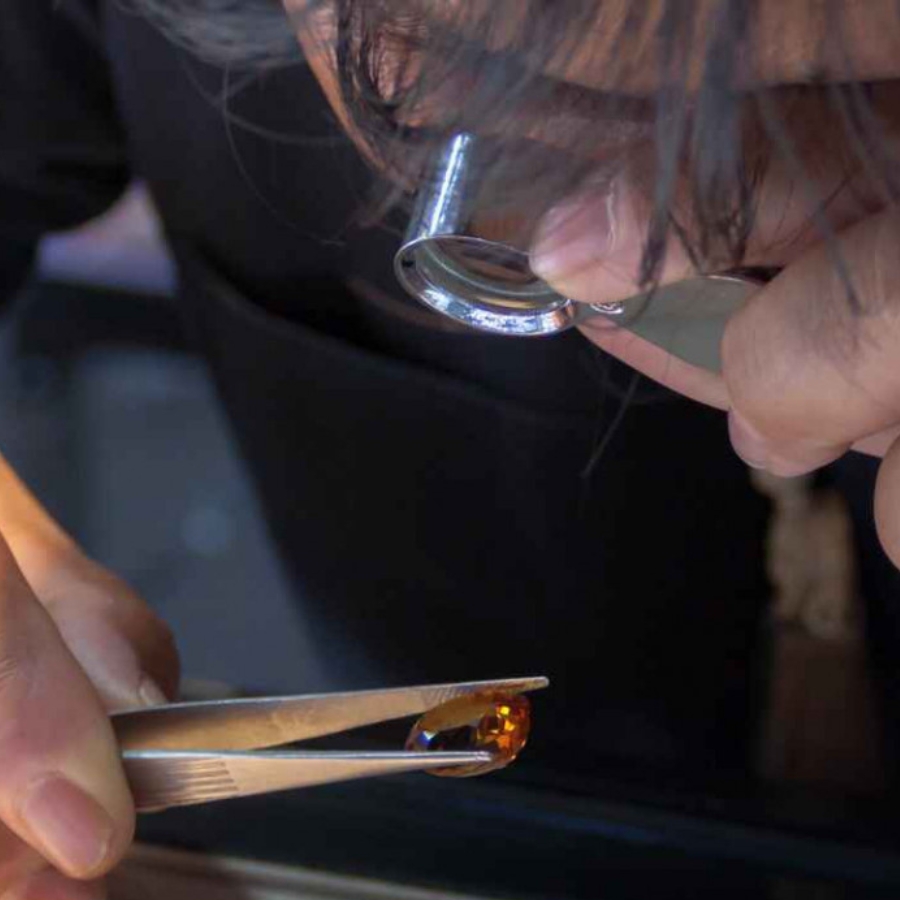
Examining the appearance of a rock, gem, or mineral involves several steps. Look at the specimen in good light. Notice its color, which can range from vibrant to pale or even colorless. Observe if it’s opaque, translucent, or transparent.
Check how light reflects off the surface. Is it shiny and metallic, glassy and vitreous, waxy, or dull? Identify the shape of the crystals if they are visible. Are they cubic, hexagonal, or something else? Look for the arrangement of the crystals, whether they’re in layers, banded, or interlocking.
Feel the surface of the specimen. Carefully observe if the mineral breaks along flat planes (cleavage) or if it fractures irregularly.
Some crystals have fine parallel lines on their surfaces, which can be indicative of certain minerals. Note any unique characteristics like patterns, inclusions, or a reaction to a magnet.
Always handle your specimens gently to avoid damaging them or altering their natural appearance. And if you’re uncertain, comparing with pictures or samples in guidebooks or online can help!
Observe how it reflects light
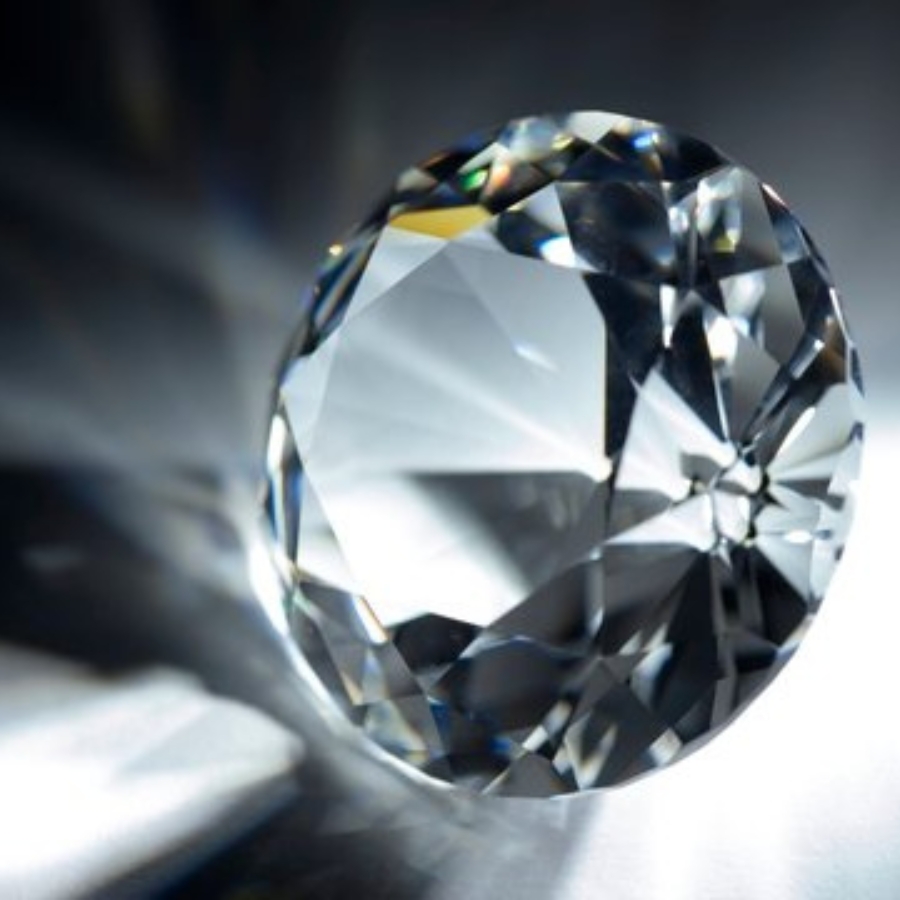
Observing how a rock, gem, or mineral reflects light is all about understanding its luster.
Use a bright light, like direct sunlight or a lamp. Make sure the specimen is clean for a clear observation. Hold the specimen under the light and turn it slowly, watching how the light plays across its surface.
Determine if it’s metallic (shiny like metal), vitreous (glassy), dull (non-reflective), pearly (like a pearl), or silky (like satin).
Luster tells us about the surface’s structure and can help identify the mineral. For example, metallic luster is often found in minerals containing metal, while vitreous luster is common in quartz.
Remember, the way a mineral reflects light is a key characteristic and can be quite distinctive.
Rub the specimen on a streak plate

A streak test helps identify minerals based on the color of the powder they leave behind when scratched against a porcelain plate, known as a streak plate. The color of the streak often differs from the color of the mineral itself and does not vary like the color of the mineral can.
Use a streak plate, which is a porcelain tile. Make sure the streak plate is clean to avoid contamination from previous tests.
Press the edge or corner of the mineral firmly against the streak plate and drag it to leave a mark. Look at the color of the streak left on the plate. This is the powdered version of the mineral. Wipe the streak plate clean before testing another mineral.
The streak test is beneficial for identifying opaque minerals with a hardness less than 7 on the Mohs scale, as harder minerals will scratch the plate instead of leaving a streak.
Remember, the streak color is more reliable than the color of the mineral itself, which can be affected by surface irregularities, impurities, or weathering.


